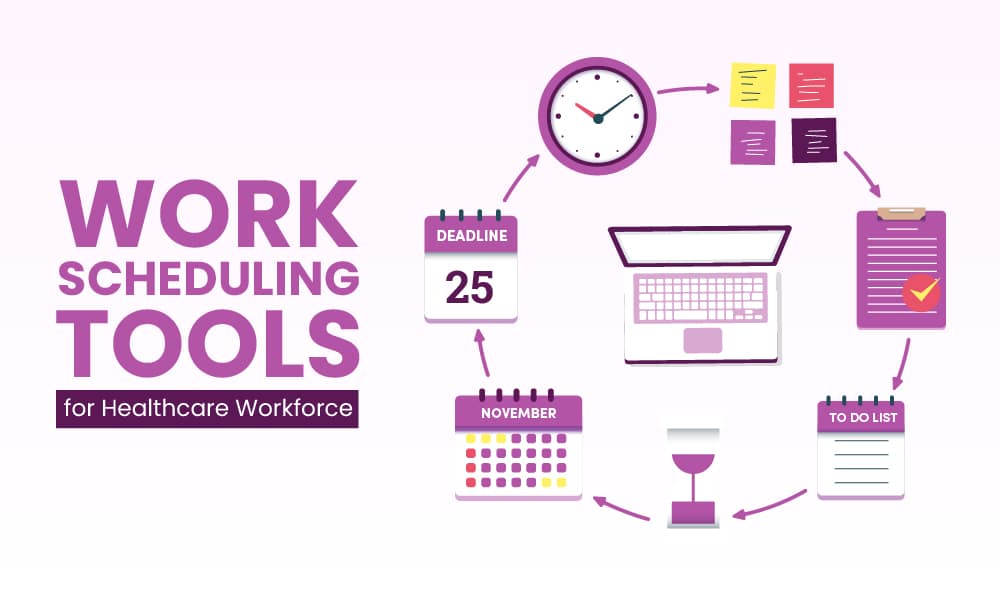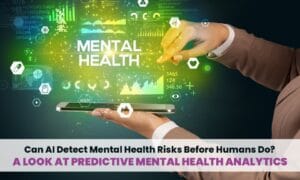
In the demanding world of healthcare, automated workforce scheduling is paramount.
It directly impacts the following:
- Patient care
- Staff satisfaction
- Operational costs
Traditional methods of scheduling, relying on spreadsheets and manual processes, often need to catch up in meeting the dynamic demands of healthcare environments.
This blog post will discuss the scheduling tools tailored for the healthcare sector – a game-changer that promises streamlined operations and enhanced patient outcomes.
Let’s dive in:
Challenges in Healthcare Workforce Scheduling
Healthcare facilities operate 24/7, requiring intricate staff schedules to ensure round-the-clock coverage.
Balancing the needs of full-time, part-time, and per-diem employees, along with various skill levels and certifications, is a complex puzzle.
Inaccurate or inefficient scheduling can lead to overstaffing, understaffing, increased turnover, and compromised patient care.
The Role of Work Scheduling Tools
Advanced work scheduling tools specifically designed for healthcare settings offer a plethora of benefits:
1. Automation and Optimization
These tools utilize algorithms to create optimal schedules based on staff availability, patient demand, and required skill sets.
Automation minimizes human error and ensures equitable distribution of shifts.
2. Real-Time Updates
Healthcare scheduling tools provide real-time visibility into schedules, making it easy for staff to access their shifts, request changes, or swap shifts with colleagues.
It promotes transparency and empowers employees to manage their work-life balance effectively.
3. Compliance and Credential Tracking
Healthcare regulations demand adherence to staffing ratios and certifications.
Scheduling tools can track staff credentials, ensuring that only qualified personnel are assigned to specific roles, thus maintaining compliance and patient safety.
4. Demand Forecasting
Accurate scheduling tools consider historical data and future trends to predict patient demand.
It helps facilities adjust staffing levels proactively, reducing overtime costs and ensuring optimal patient care.
5. Improved Communication
These tools often feature built-in communication channels, allowing managers to promptly broadcast important updates or address staffing needs.
It enhances coordination among staff members and reduces confusion.
6. Analytics and Reporting
Scheduling tools generate comprehensive reports that offer insights into the following:
- Staffing patterns
- Overtime expenses
- Compliance metrics
These reports assist in making decisions based on data and formulating strategic plans.
7. Employee Satisfaction
When employees have more control over their schedules, job satisfaction rises.
Scheduling tools enable staff to request specific shifts, time off, or even set their availability preferences.
8. Flexibility for Managers
Managers can swiftly adjust schedules to respond to unexpected events, ensuring staffing remains optimal even in crises.
Top 3 Healthcare Workforce Management Software Tools
Here are the top three workforce management tools for the healthcare industry:
1. Workstatus
Work status is a comprehensive healthcare workforce management tool that combines time tracking, scheduling, and communication features to optimize productivity and enhance transparency for healthcare professionals.
Its intuitive interface empowers healthcare workers to manage their schedules and tasks efficiently while ensuring accurate timekeeping and streamlined communication.
Key Features:
Time Tracking: Workstatus offers robust time tracking features, allowing healthcare workers to record their hours and activities accurately.
Scheduling: Create and manage shifts, assign tasks, and track employee availability effortlessly.
GPS Location Tracking: Especially useful for home healthcare, Hubstaff tracks employees’ locations during working hours, ensuring accountability.
Major Benefits:
Efficiency: Workstatus streamlines time tracking and scheduling, saving administrative time and reducing errors.
Transparency: GPS tracking enhances transparency, enabling supervisors to monitor remote workers effectively.
Data-Driven Insights: Workstatus’s reporting and analytics provide actionable insights for optimizing staffing and resource allocation.
2. Shiftboard
Designed for the intricate demands of the healthcare sector.
Shiftboard offers automated scheduling solutions that factor in staff availability, skill sets, and patient demand.
This platform facilitates seamless coordination among healthcare teams by providing real-time updates, ensuring compliance with industry regulations, and enabling efficient communication.
Key Features:
Automated Scheduling: Shiftboard uses algorithms to create optimized schedules based on staff availability, skills, and patient demand.
Credential Management: Track employee certifications and ensure qualified personnel are assigned specific roles.
Communication Tools: Send alerts, notifications, and messages to staff members, facilitating seamless communication.
Major Benefits:
Optimized Staffing: Automated scheduling leads to optimal staffing levels, reducing costs and enhancing patient care.
Regulatory Compliance: Shiftboard’s credential management ensures compliance with staffing requirements and industry regulations.
Enhanced Communication: Effective communication tools improve coordination among healthcare teams.
3. Kronos Workforce Central
Kronos Workforce Central leverages advanced analytics and demand forecasting to help healthcare organizations effectively manage their workforce.
With mobile accessibility and comprehensive reporting, Kronos empowers healthcare professionals to make informed decisions, optimize staffing levels, and ensure high-quality patient care.
Key Features:
Demand Forecasting: Kronos uses historical data to forecast patient demand and adjust staffing accordingly.
Mobile Access: Access schedules, request time off, and communicate with colleagues using the mobile app.
Labor Analytics: Generate detailed reports and analytics for better decision-making and resource management.
Major Benefits:
Efficient Resource Allocation: Demand forecasting prevents overstaffing and understaffing, optimizing resource allocation.
Flexibility: Mobile access empowers healthcare workers to manage their schedules on the go.
Informed Decisions: Data-driven insights from labour analytics contribute to strategic workforce planning.
Future Trends in Healthcare Workforce Scheduling
Here are some of the future trends in healthcare workforce scheduling:
1. AI and Predictive Analytics
AI-driven solutions will revolutionize the process in the future of healthcare workforce scheduling.
Predictive analytics will anticipate patient influx and staffing needs, optimizing schedules for peak efficiency.
2. Employee Self-Scheduling Options
Employee autonomy will play a key role in future scheduling trends.
Self-scheduling tools will empower healthcare workers to choose shifts that align with their preferences, skills, and availability.
This enhances job satisfaction and promotes a better work-life balance, resulting in a more engaged and motivated workforce.
These systems will integrate seamlessly with overall staffing needs, balancing employee choice and operational requirements.
3. Electronic Health Records (EHR) Systems Integration
Seamless integration between scheduling tools and Electronic Health Records (EHR) systems will be paramount for effective healthcare management.
The future will see scheduling solutions pulling patient data from EHR systems to anticipate appointment volumes and speciality requirements.
This integration ensures that schedules are aligned with patient needs and healthcare professionals’ expertise, leading to more efficient patient care delivery while minimizing scheduling conflicts.
These trends highlight the transformative potential of technology in reshaping healthcare workforce scheduling, enhancing operational efficiency, and ultimately improving patient outcomes.
Selecting the Right Scheduling Tool
When choosing a scheduling tool for a healthcare workforce, several factors come into play:
1. Integration:
Make sure the tool you are planning integrates seamlessly with your systems, such as electronic health records (EHRs) and payroll software.
2. Customization:
Choose the tool that fairly justifies your demands depending upon the unique needs of your services accommodating various roles, departments and shifts
3. User-Friendly Interface:
The user-friendly interface is a must for every healthcare tool as it should be more flexible for every staff member to use for navigating time management and accessing allotted schedules.
4. Compliance Features:
Always search tools that offer compliance tracking, helping you adhere to industry regulations and certification requirements.
5. Scalability:
The tool should be capable of scaling as your healthcare facility grows, accommodating additional staff and departments.
Closing Thoughts
Work scheduling tools are essential assets that streamline operations, boost staff satisfaction, and elevate patient care.
By automating scheduling, optimizing resources, and ensuring real-time updates, these tools empower healthcare facilities to manage their workforce efficiently.
Embracing specialized scheduling tools is a strategic step that promises enduring benefits in an ever-evolving industry.
We recommend Workstatus and Shiftboard as the best healthcare workforce management solutions for the healthcare industry.
Thanks for reading!!





